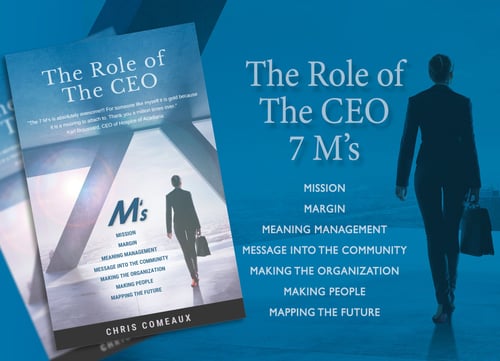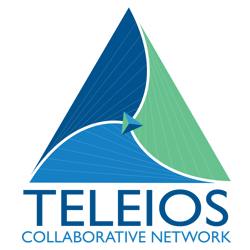
What is the difference between a $2.2 million settlement, and a 110k fine? The answer is: an effective compliance program.
According to the US Federal Sentencing Guidelines, financial penalties may be reduced up to 95% when an organization is able to demonstrate that an effective compliance program is in place.1 Why? Because the US Sentencing Commission balances an organization's culpability against the episode of non-compliance. This culpability scoring system dictates an organization's exposure to potentially crushing fines. An organization that is fully cooperative in the investigation, and that is found to have an effective compliance and ethics program in place, may reduce its culpability score to zero, which in turn reduces the fines by up to 95%.
The opposite is also true: a high culpability score results in a recommendation of the highest fines. Red flags include affirmative answers to the following questions: Would the occurrence have been detected and/or prevented if the organization had been diligent in administering the compliance and ethics program? Did the organization create an environment that was ripe for misconduct? Was it negligent in the oversight or administration of its data security program?
Company officers and the Board of Directors are expected to play an active role in oversight of the compliance program. Board minutes, agendas, and established mechanisms for compliance risk reporting/risk management are all evidence that the compliance program is being administered properly.
In FY2018, the DOJ recovered over $2.5 billion in settlements from healthcare organizations. This is more than the government recovers from any other sector, including the housing and mortgage industry. This effort has proven to be a good investment: $5 is returned for every $1 that the government spends recovering money from healthcare providers. Given this ROI, it should come as no surprise that an additional $45 million was added to the CMS budget to pursue fraud and abuse of healthcare dollars.2
Let's look to the top risk areas affecting all provider types:
- Financial relationships with referral sources (Anti-Kickback Statute and Stark Law violations)
- Medical necessity (billing for services when the setting, duration, or intensity was greater than medically necessary)
- Inadequate documentation (to demonstrate medical necessity or to comply with Medicare requirements)
Additional high-risk areas of continued focus by the government include HIPAA violations, quality of care (inadequate, or provided by unqualified personnel) and overpayments.
Notable examples of enforcement activity in the post-acute care setting include the February 2018 settlement with Horizons Hospice, LLC., where the government obtained a $1.2 million settlement for admitting patients who were not eligible for hospice (false claims). In May of 2018, Health and Palliative Services of the Treasure Coast, Inc.; The Hospice of Martin and St. Lucie, Inc. and Hospice of the Treasure Coast, Inc. agreed to pay a $2.5 million settlement. The alleged behavior included falsifying doctor's signatures, backdating medical records, and lack of documentation to support terminal status.
Also notable is the Guardian Hospice of Georgia case where the US contended that Guardian’s business practices (setting “aggressive targets to recruit and enroll patients”) led to admission of patients who were ineligible to receive the hospice services.3 Another example is the case of Southern Care Hospice, where the government joined with the whistleblowers asserting that insufficient documentation to support hospice eligibility resulted in inappropriate admissions. The hospice was ordered to pay a $24.7 million dollar settlement to the government.4

An effective compliance program serves to identify risk, and plan for vulnerabilities. It differentiates your organization from unscrupulous competitors. And in the case of a settlement, it also demonstrates to the government that the organization deserves up to a 95% reduction in fines. Investing in your compliance program is good math.
How confident are you that your compliance and ethics program has identified and managed your compliance risks?
Melody King, MSJ, CHPC

Download the eBook below and unlock your true self-leadership potential.


An organizational model that allows not-for-profit hospices (Members) to leverage best practices, achieve economies of scale and collaborate in ways that better prepare each agency to participate in emerging alternative payment models and advance their charitable missions.
References
1 United States Sentencing Commission, Guidelines Manual, §3E1.1 (Nov. 2018) https://www.ussc.gov/guidelines/2018-guidelines-manual
2 Office of Management and Budget, An American Budget, Fiscal Year 2019 (Feb. 2018)Available from: https://www.govinfo.gov/content/pkg/BUDGET-2018-BUD/pdf/BUDGET-2018-BUD.pdf
3 US Dept of Justice, Office of Public Affairs. Justice News, 2015. United States Settles False Claims Act Suit against Guardian Hospice and Related Entities. Available from: https://www.justice.gov/opa/pr/united-states-settles-false-claims-act-suit-against-guardian-hospice-and-related-entities
4 United States ex rel. Woods v. S. Care, Inc., CAUSE NO. 3:09-CV-00313-CWR-LRA (S.D. Miss. Sep. 30, 2013) and https://www.justice.gov/archive/opa/pr/2009/January/09-civ-043.html
Related Posts
DNR, Hold the Stuffing, Please.
Whether you are a turkey-lover or practice a meat-free diet, chances are when you sit down to...
Leadership During Times of Crisis
Today, in the midst of the chaos and unpredictability we’re all experiencing, a friend shared an...
Tackling the Information Blocking Rule! Enhancing Patient & Provider Access to EHI
Consider this – On April 6, you get a medical records request from a patient who asks for their...


